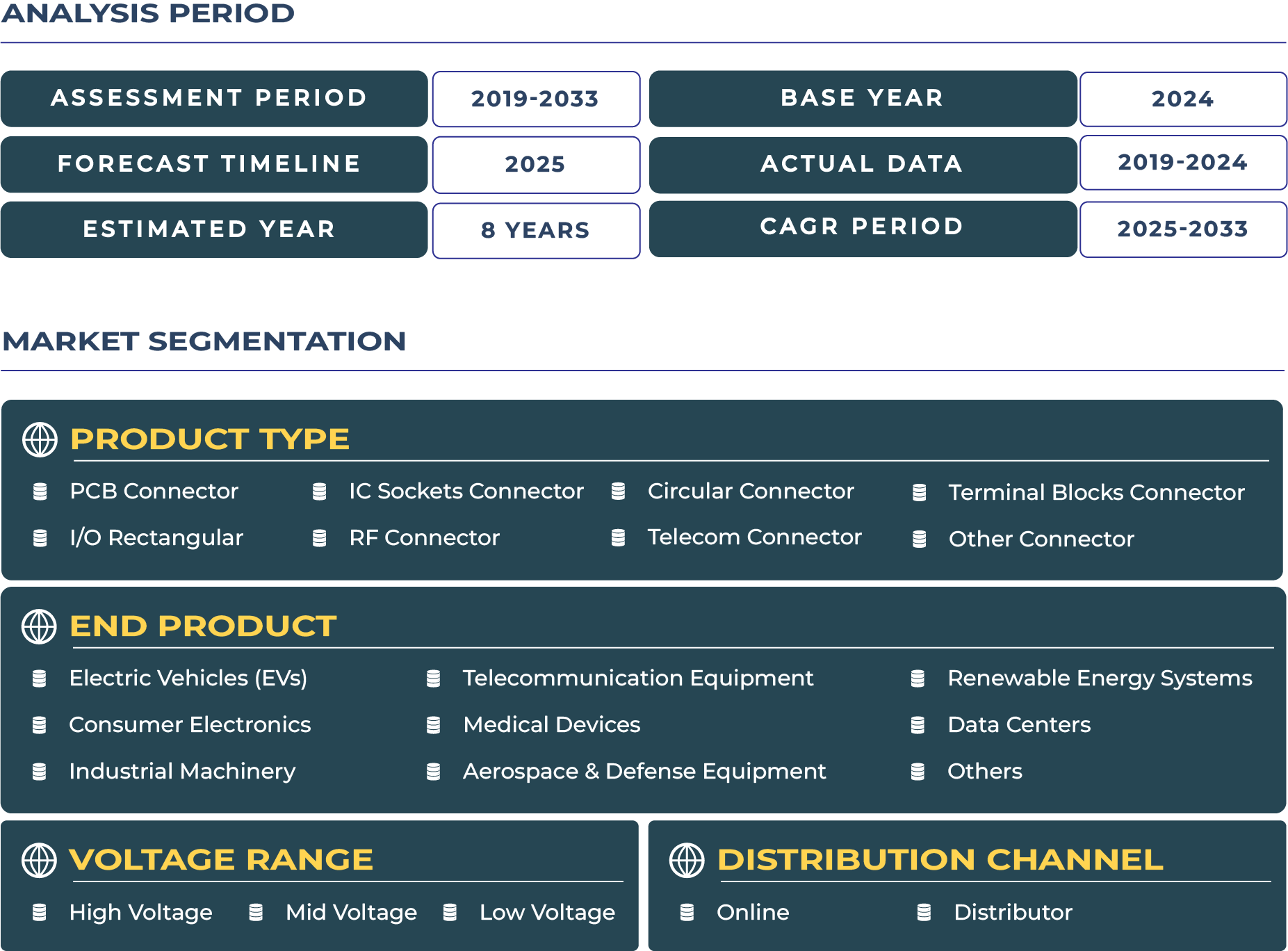MARKET OUTLOOK
Philippines Connector Market Outlook
Rapid‑Deploy Connectors Catalyzing the Philippines’ Cloud & Health‑Tech Ambition
The Philippines is rapidly charting a course toward a connected future, underpinned by scaled data centers and burgeoning medical‑electronics industries. This evolution necessitates a connector ecosystem characterized by swift deployment, interoperability, and standardization. The connector market is projected to account for USD 320 million by 2033, driven by the region’s accelerating investments in automation, cloud infrastructure, and medical device innovation, all of which require highly adaptable and standardized connection solutions.
Drivers & Constraints: Data Center & Cloud Growth Versus Interoperability Gaps
- High-Speed Infrastructure Demand Driving Connector Growth
The expansion of cloud and hyperscale data centers by operators such as Equinix, ePLDT, and Digital Edge requires high‑density telecom connectors, circular power interfaces, and robust PCB headers for rapid deployment. In December 2024, ePLDT unveiled plans for a 100 MW AI-ready data center in South Luzon, underscoring the scale of connector demand. - Snap‑In Assemblies for Speed & Scalability
Data center managers increasingly favor push‑pull and snap‑in connectors to enable efficient swapping and maintenance of storage racks, network cards, and sensor modules. These standardized systems reduce labor time and minimize risk during rapid scaling. - Restraints: Limited Interoperability & Regional Cost Discrepancies
Despite advances, lack of common standards across OEM platforms complicates device integration. Dashboards built around disparate connector specs have slowed deployment timelines. Additionally, while labor costs are lower than regional peers, local conditions can inflate costs for precision services in Manila and Cebu.
Trends & Opportunities: Connector Standardization and Rapid Prototyping Synergies
- Adoption of Standard Multi‑Industry Connectors
The market is witnessing a shift toward compliance‑ready connectors that meet telecom, data‑center, and health‑tech standards. This harmonization accelerates deployment in multi‑vertical environments. - Rapid Prototyping Connectors for Electronics
Medical-device manufacturers, especially in remote patient monitoring, are turning to rapid‑assembly snap‑in I/O and PCB connectors. Devices for telehealth—ranging from glucose monitors to home ventilators—utilize standardized boards with connector headers that can be easily assembled and field‑tested.
Opportunities
-
- Compliance‑Ready Connectors Across Verticals: Connector firms can launch interface kits compatible with both data center racks and medical devices—streamlining procurement and assembly lines.
- Rapid‑Prototyping Kits for OEMs: Vendors can offer connector development kits targeting medical and consumer electronics firms launching MVP devices in the Philippines.
*Research Methodology: This report is based on DataCube’s proprietary 3-stage forecasting model, combining primary research, secondary data triangulation, and expert validation.
[Learn more]
Philippines Connector Market Segmentation
Frequently Asked Questions
They enable rapid deployment and maintenance of racks and modules in hyperscale/cloud environments, reducing labor costs and accelerating rollout.
It is fueled by health tech and telehealth growth, supported by fast assembly connectors ideal for MVP devices and compliance systems.
Medical electronics demand fast to market and standardized connector kits-enabling local assembly, regulatory compliance, and fast support networks.







